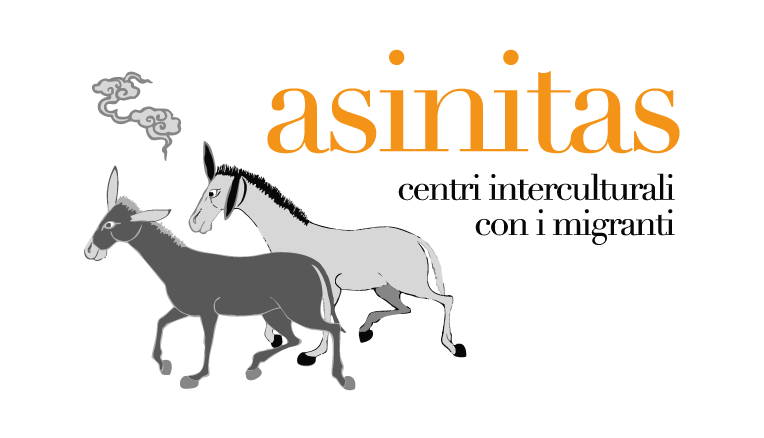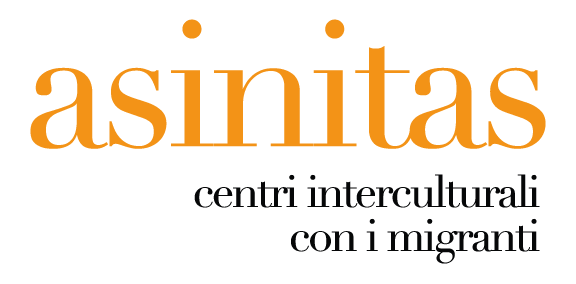Our method
Body and voice
The body, in its entirety is the main vehicle of learning: it is in the body that lie sensitivity and rhythms, most of our memory; it is with the body that we enter into the world as people and citizens. We start every morning with a circle, after a breakfast with coffee, tea and cookies. It is the initiation rite of the day, our good morning and our call: we don’t have attendance lists: in a circle we look at each other, who is there and who is not. We join hands, we hear the neighboring bodies, their warmth, support, sometimes the embarrassment. Those are our attendance lists. When we talk about migration the concept of presence acquires an essential value in relation to the double feeling of absence that the migrants carry with themselves: not only the physical absence from the country of origin, but also the absence in the host country If praesentia means to be “in front of”, does the simple fact of being in front of someone imply existence for that person? Sharing the same city, the same streets, the same bus, the same neighborhood does not necessarily mean being present and visible to oneself and others. Moreover, as Miguel Benasayag writes, in order to achieve true presence it is necessary to suspend judgment and especially get rid of all those labels and superstructures which give us the impression of knowing who is in front of us, but actually prevent the real encounter with the other. To begin this long process, our first act of presence is that one concerning the body. During the circle we stop our thoughts for a few minutes, as well as the difficulties of everyday life – the document that is not yet ready, the feeling of nostalgia for the family, the uncomfortable bed of the refugee center. Often we start with a song, a song from the Italian folk tradition: we listen to the melody, the sound of words, then we read them together and sometimes we try to associate them with gestures to fix them more easily in our mind. Singing is good for the body: it activates the senses and facial expressions; it connects, excites, amuses. Furthermore, in choral singing there is no need of individual performance, there is a collective voice in which you can feel invisible and protected or, if you will, show. Other times we suggest the students to sing traditional songs in their mother tongue. Sometimes it’s hard, to begin, but most of the times the group picks it up and encourages it. The mother tongue evokes and gives back memory, dignity; singing discloses each and everyone to others by engaging the body and the senses without demanding full comprehension. We also propose presentation games, bodily activation activities, dances, trust games, cooperation and opposition games, sensory games. The playful dimension leaves freedom of personal participation and allows mutual understanding within the group, breaks up relational rigidity, puts emotions into play, and encourages laughing about oneself and others.
Storytelling
People who come to our schools, for the most part, arrived only recently in Italy and in Rome. They are men and women who have made long journeys through deserts, mountains, seas. They run away from wars, persecution, poverty, drought. Some of them bear deep inner dramas. For others it is rather the desire to travel, to learn, to study that pushed them to leave.. What unites these people is the inevitable fracture of life that migration brings along. What brings those people together is the inevitable rift of life caused by migration. To knot again the threads of memory from the places of origin to the places of the present is a fundamental process for migrants, as well as re-situate and re-signify the personal story within the collective history of the world. The first act of appropriation of presence is, therefore, learning the language of the host country without which one can only remain in a state of nostalgic closure. But the language that normally is taught in L2 Italian courses as well as the one used in the textbooks ignores the history of the person; it is a language that reflects only the needs of the migrant integration, a language related to bureaucracy and services. We care instead about the language of memory, ideas and feelings, the language of self-expression, of relation with the others and the world, the language that builds bridges and creates imaginaries. For this reason telling and self-telling becomes a central practice of our didactic. In order to do that, at school, we use images of art, illustrated books, tales, mythological and traditional stories, poetries, films and stories concerning the real life brought by our students. Stories about roots and identity, loss and suspension of sentimental relationships, personal and cultural disorientation, travel, escape, change, adventure; these are all the cross-cultural anthropological aspects which do not speak about me, about you, that do not ask, do not intrude, but within which you can recognize yourself and somehow also understand better each other. In tales often the hero, poor and sad, leaves his original place and must pass several tests before living cheerful in a new kingdom. Often the myths also tell about metamorphosis and exile. After listening, reading, comprehension, discussion, we propose narration on the subject, written or oral, for individuals or couples. In couple students tell each other their stories, then they return to the group and everybody narrates in the first person the story they just heard, as if it was their own. When structuring a story, the sense of an experience is also reviewed and reconstructed according to the listener and the context. The story and the exchange of experiences are metacognitive operations of highly effective training. Connecting self-experience with experiences heard from others allows a glimpse into other possibilities, stimulates other processing of meaning, allows a better comprehension of one’s own by giving it new meanings. People are free to tell a story, decide whether to put themselves on the line or not. We don’t care about the objective truth of the events, we only care about s the desire or need each person has to express it. During the writing we intervene as little as possible on the language, convinced that the correction and the accuracy of the shape brake thinking, the language, the hand. The restitution of the stories within the group is an important moment, it is made in a circle, in coziness and listening, without interruption, questions, judgments. Narrations become then traces to hang on the walls of the classroom, testimonies to be included in the booklets that we publish each year at the end of school.
Doing
Beside the use of body and voice, of narration and memory, it is essential to use the hands. This implies working on two different dimensions: one is the use of didactical materials from the Montessori tradition (and therefore movable alphabets, grammar boxes, language games, materials for logical analysis, etc.), which have the power to make the linguistic structures tangible and promote experience before the revision at the cognitive level; the second dimension is the one of expressive / manuals workshops. We take good care of the “doing” – manual work – as we believe that learning firstly comes from experience. Approximately once a month, all the classrooms of the school get together in one area where various materials are set up, which will be used to carry out a composition: students work together, regardless of how they can read, write, or apply grammar rules. We organize workshops at the end of thematic blocks: for days we work on a story, its content, the suggestions and reflections it evokes. Then, during the workshop, the theme is brought to an interior and individual dimension throughout a manual production. As with writing, everyone has the freedom to get more or less involved, to build what they want and need to express, but without the obstacle of language. The workshop methods are always thought and experimented first by the teachers’ team. That’s important for the choice of materials, which normally comprise recycled materials, fabrics, wools, yarns, natural elements, papers, colors and glues. It is important that the materials are beautiful and diverse, orderly arranged in the classroom, and that the proposal is clear and reassuring. The creative part is always followed by a more intimate moment for writing.
We think that the ability of verbal expression can be strongly supported and conveyed through expressiveness manual, graphic or painting activities. It should be the hands to search self-expression, because hands use a language which will generate new words, new possibilities of expression and new language.
The creation reveals its author, sums up their expressive desire in the here and now of the creative situation. The dimension of “doing” simplifies direct relations through the use of shared materials and tools, creates convivial moments, allows for the active participation of all, encourages mutual help and discussion. “Concretely doing”, despite anxiety it can generate at the beginning related to the fact of using manual skills that you might think you do not have, it provides great relief because it shows that you can afford more than a useful learning.
It is fundamental that each participant feel reassured and sustained in case they refuse the creative proposal; they need to feel that their work has been valued, and each one should be satisfied with their results. No one can leave the hall feeling that they failed. At the end of the day, students show and share their own work with the rest of the group, then the final works will be hung on the walls or exhibited on the tables of the school, becoming the final trace of a common path.




